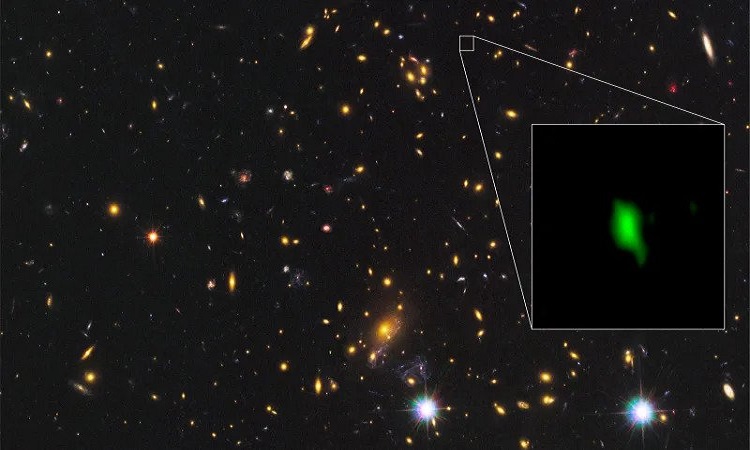In the Universe, the stars “shine” thanks to the nuclear fusion operated in their heart. It is so hot that the atomic nuclei of lighter elements combine to create heavier ones. Nevertheless, in the beginning, the first stars were composed only of hydrogen and helium (with some traces of lithium). These light elements created shortly after the Big Bang were then scattered throughout the Universe to form new generations of stars. It was these stars that started creating heavy elements like iron as they went.
In fact, the abundance of these elements is a good indicator for determining the age of the stars. An object rich in iron (and thus composed of the remains of many generations of stars that preceded it) will thus be considered relatively young. And on the contrary, an object poor in heavy elements will be considered very old. Rich in iron, our Sun is in this respect a relatively young star “only” 4.6 billion years old. Remember that the Universe is about 13.8 billion years old.
An anemic star
Studying the first stars is very important if we want to understand the evolution of the Universe better. The first generations are inaccessible to us. Nevertheless, with a little luck, we can fall on stars of the second or third generation. A few days ago, a team of researchers announced that they had discovered one of these stars. It’s called SMSS J160540.18-144323.1. However, this object has the lowest iron level ever observed in the Galaxy: one part for 50 billion.
“It’s a drop in an Olympic pool,” says Thomas Nordlander of the Australian National University and lead author of the study published in the Monthly Notices of the Royal Astronomical Society. “This incredibly anemic star, which probably formed a few hundred million years after the Big Bang, has iron levels 1.5 million times lower than those of the Sun”.
After analysis, the researchers assume that this star was formed following the explosion of a star of a first or second-generation just ten times more massive than the Sun. The explosion would not have been very impressive. Under the effect of gravity, most of the heavy elements would have been reabsorbed by the object transformed into a neutron star. The few elements that managed to escape from its gravitational pull have been scattered throughout the cosmos, then combining with other light elements to form this newly discovered star.




